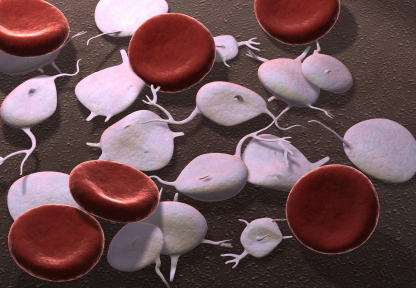Glanzmann Thrombasthenia
 Glanzmann thrombasthenia (GT) is a very rare platelet disorder. It affects about one in every million people. Like the other disorders in The Handbook, people are born with it, and it affects both males and females.
Glanzmann thrombasthenia (GT) is a very rare platelet disorder. It affects about one in every million people. Like the other disorders in The Handbook, people are born with it, and it affects both males and females.
Glanzmann thrombasthenia (GT) is named for the doctor who first identified it. In 1918, Dr. Eduard Glanzmann found it in children living in a village in the Swiss Alps. The children had normal platelet counts but large bruises on their bodies.
In normal blood clotting, platelets go through a process of aggregation. Aggregation is when platelets stick to each other to form the platelet plug. One of the clotting factor proteins binds the platelets together. It is factor I, called fibrinogen. Fibrinogen needs a certain spot to stick to on the surface of the platelet. This spot, or receptor, is called glycoprotein IIb/IIIa (GPIIb/IIIa).
People with GT either don’t have enough GPIIb/IIIa on their platelets or what is there does not work right. The fibrinogen can’t stick to the platelets and make them clump together. The platelets can stick to the walls of the injured blood vessel but can’t stick to each other.
Subtypes of Glanzmann Thrombasthenia
There are three subtypes of Glanzmann’s thrombasthenia:
- In Type I, the amount of GPIIb/IIIa is less than 5% of normal.
- In Type II, the amount of GPIIb/IIIa is between 5% and 20% of normal.
- In Type III, there is a normal amount of GPIIb/IIIa but it does not work correctly.
